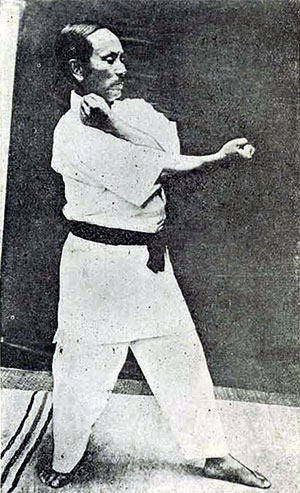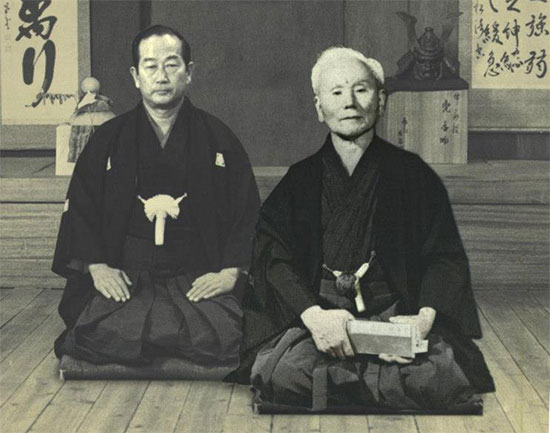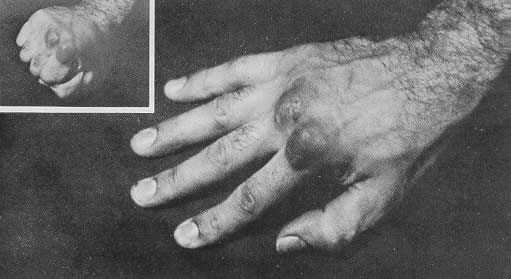MARTIAL ARTS
Karate: Myths, Legends and Outright BS

There’s definitely something about the martial arts that brings out expectations that exceed human reason. The notion that at one time, the ancient masters could kill a man by the power of their will or leap from treetops like a bad kung-fu movie. Even today, many myths prevail, albeit distilled in their intensity. With my main background in Shotokan karate, we are no less immune to this than any other style. Dare I say, we are often the poster children for silly urban myths.
The Masters had the best technique.
No, they didn’t. Often they were plain awful.
Gichin Funakoshi is regarded as the founder of modern karate when he took Okinawan karate and re-packaged it for Japanese consumption. From there Shotokan karate was born. While credit must be given to Mr. Funakoshi for his building the foundation of the Shotokan curriculum, he was by no means what one would call an impressive karateka. His stances were crazy high and his kime was at a level of maybe an upper-level Kyu belt at best. If Bill & Ted brought Gichin forward in time, changed his came to Carl and sent him into a Shotokan dojo, he’d be lucky to get past purple belt.

However, all was not lost…
The Students became the Masters
While Gichin’s karate abilities were mediocre at best, he was clearly an accomplished instructor. Watching old video archives shows that the sharpness and stances of his students were in every way superior to their master. One such student was Masatoshi Nakayama, who is more responsible for modern Shotokan than Gichin by a long-shot. While Funakoshi may have been the head of the Japan Karate Association, it was Nakayama making stuff happen. One cannot deny that nobody in Shotokan looks to Gichin for examples of good form and technique. I remember as a junior belt seeing a video of Gichin doing Tekki Shodan and wondering who this old guy butchering the kata was. It was an eye opener.
By contrast, today it is Nakayama and his students technique that remain the gold standard in Shotokan. Gichin is a picture in the front of the dojo of an old oriental dude and little more. Kind of like saying, “thanks Gichin, but we can take it from here”.

The Masters had brilliant training ideas 100% of the time.
Ha ha ha…snort, choke!! Sure. But they also had some absolutely terrible ones.
The makiwara is a prime example. Matsumura Sokon ( 1809 – 1899 ) invented the makiwara and Funakoshi’s sensei, Itosu Anko ( 1830 -1915 ) popularized it in the early 1900’s. While modern makiwara training has been modified to not be completely stupid, there are some who still adhere to the misguided approach of the masters…that of conditioning by forming horrific callouses on the strike points.

Hands are wonderful things. You can play piano, rock a guitar, climb rope and flip bad drivers the bird. So why anyone would want to beat them into gnarly, deformed lumps eludes me. A makiwara should be used only for feedback on ones technique…never for knuckle conditioning. By almost every conceivable metric, a standard punching bag is superior to hitting a plank of wood sticking out of the ground. Ask just about any MMA fighter if you doubt this.
Karate builds character
Well, it might build character in the same way commitment to soccer, hockey or tennis builds character. A level of devotion is required to maintain training. Confidence can certainly be gained. But true character? No, developing character that’s more than skin deep doesn’t work that way. To be honest, if your parents haven’t beaten basic character concepts into your thick skull by the late teens, my money says you have a significant uphill battle in front of you.
Take the Dojo Kun for example. The very first promise is to “seek perfection of character”. Ok. How exactly? I would argue that putting God, family and community on top are the means of developing character. Finding role models is key. But karate itself won’t teach this. Today in an era of moral subjectivity and snowflakes, I would argue karate has no chance whatsoever of pulling this off.
Someone whose handshake is his word…who means what he says and does what he promises…who puts the needs of others above his own…who does what is right, not popular…who fights to defend your right to be an ignorant ass even when they know you’re wrong…that is character. Best I can tell, karate instills none of these.

Training is for life
Right now, I have no doubt some young kyu-belt is pounding their keyboards in a fit of rage. Impossible! The masters said it takes a lifetime! You despicable Gaigin dog, I demand to know your rank and Sensei!! Oh, you misguided child. So much to learn.
The sad truth is this: in 10 years of proper training, you will peak. You may gain some insight. You may be a better teacher. But your physical abilities will not improve and in many cases will actually degrade due to continual punishment and old age. Nakayama, bless his soul, was an awesome karateka. But if you think Georges St. Pierre couldn’t drop him in two seconds were we to alter the time space continuum, you’re painfully deluded. Diminishing returns are simply a fact of life.
If we rewind the clock and look to those masters of which you speak, it might shock you to learn they became head senseis in surprisingly little time. Lets take the infamous Sensei Okazaki for example. He began training in 1948. In 1955 he became the head of the JKA Instructor Program...the guy who tells everyone else how it’s done. Break out your calculators kids, that’s only 7 years. Barely enough time to become a sandan these days. He then went on to say an instructor needs a decade or two of training…which is a curious contrast to his own life. ( Textbook of Modern Karate by Okazaki Teruyuki )
But it also begs the question that if karate is for life, then did anyone achieve the Holy Grail of karate fulfillment? Is there even a Grail at all?
More than human?
Like I said, there is no reason the average person who begins training at 20 could not be every bit as good in a decade as the Japanese masters, if not better. Most of that will naturally depend on your genetic limitations and level of commitment. That’s a tough pill to swallow for many who have idolized these historical figures as something more than human. In a way I did that as a kid with my first Sensei. The guy far exceeded the physical abilities of just about anyone in the district. Then in my late teens I met him once buying groceries. Not sure what I was expecting. Maybe that after class he ascended on Mount Olympus and returned twice a week for classes? But it was a subtle reminder that these folks are all simply human that like potato chips every now and then too.
That understanding helped a lot in exams down the road, even into my adult years of training. That table of alpha black belts at the front with Sensei Yaguchi right in the middle…they all got up the same morning I did and put their pants on one leg at a time. Sensei probably had a nice breakfast and laughed at the fake morning news. Maybe he even got upset that his power bill increased and other daily tedium that we all endure. I’ll bet he even sneaks a second cookie off the plate when his wife isn’t looking. Believe me, it makes for easier interaction when not falsely believing we are standing before prophets. I imagine they find the hero worship more than a little creepy too.


